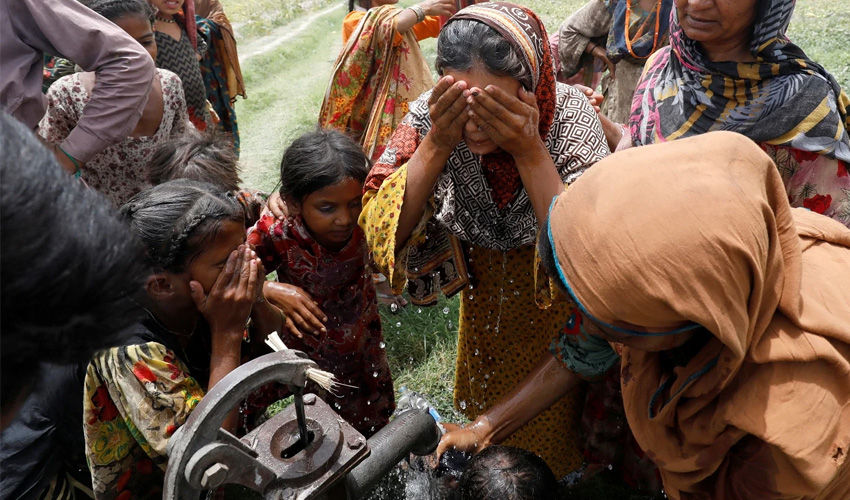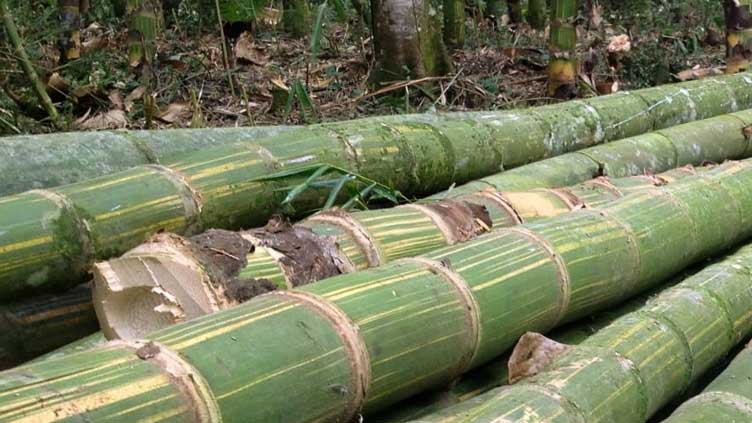In the rural nooks of Pakistan, where mountains kiss the sky and deserts stretch endlessly, climate change is rather more a scientific concept-but an everyday fight. Within this battle, though, it is often the women who are on the front lines. These women, while contributing least to global carbon emissions, bear the full brunt of the crisis.
From the burning summer heat in Sindh to erratic rainfall in Punjab and floods in Balochistan, rural women are bracing themselves against the many faces of climate change that threaten livelihoods, health, and security. Yet, while climate change reveals their vulnerability, it also brings forth their resilience. Indeed, women can act as significant change agents in the effort toward building climate resiliency to protect their families and contribute to their community's survival.
About 65% of the population of Pakistan resides in rural parts, according to the Pakistan Bureau of Statistics, and nearly half of them are women. Women traditionally bear the responsibility for fetching water, gathering fuel, and engaging in agriculture, all tasks made more arduous and hazardous by climate change. Scarce natural resources mean women have to walk farther and longer to fetch water or firewood, which exposes them to physical exertion and even puts them at security risk.
Besides, their role in food production greatly suffers due to unpredictable weather conditions. In Pakistan, for example, women constitute about 60 per cent of the labour involved in agriculture, but their work is largely informal and unrecognized. When crops fail due to floods or droughts, their households fall deeper into poverty and food insecurity worsens.
If rural men can migrate to urban centres or even other areas in search of work during climate crises, the onus of managing a household during such dire conditions falls on rural women. Lack of mobility coupled with social norms restricting women's participation in decision-making processes increases vulnerability. It is evident from studies that women and children are more prone to malnutrition, illness, and even mortality during disasters like floods and heat waves as a result of limited access to healthcare and emergency services.
The 2022 floods in Pakistan brought this disparity into sharp contrast. Chitral, Sindh, and Balochistan suffered under torrential rains, leaving thousands of families displaced.
For many women, the task at hand was not only to seek shelter but also to protect their children and ageing family members. Without appropriate sanitation facilities in relief camps, they were more vulnerable to sexual harassment, problems with reproductive health and waterborne diseases. Flooding was a sad reminiscence that climate-related disasters continued to widen the existing gender divides.
While they may be vulnerable, women are not passive victims of climate change. Normally, they are on the front line in terms of climate resilience-a fact usually unseen by the wider society. In many rural communities, women have key roles in managing natural resources, preserving local biodiversity, and developing agricultural practices resistant to altered weather patterns.
One such example can be seen in the Thar Desert, Sindh, where women have been instrumental in planting drought-resistant crops such as millet and sorghum. These crops not only need less water but also offer the requisite nutrients so that, come droughts, the requirement of food is met with. Women in Thar have also been part of rainwater harvesting techniques wherein water is collected during the rare rainy seasons for consumption throughout the dry months.
The women of Chitral District, a mountainous area highly susceptible to glacial melting and eventual flooding, organize community groups responsible for water level monitoring and engaging in disaster preparedness activities. This is important to make the families knowledgeable about the means of evacuation and prepare basic requirements necessary when flash floods occur.
Education thus acts as one of the major determinants in building women's resilience against climate change. UNESCO estimates that out of all countries in the world, Pakistan has one of the highest numbers of out-of-school girls, with over 12 million girls not currently attending any form of schooling. Women, due to a lack of education, have limited access to information on adaptation techniques, agricultural innovations, or disaster preparedness strategies. This divide is being bridged with the work of different NGOs and other international bodies. For instance, RSPN has imparted training related to climate-smart agriculture to these women. The training predominantly concentrated on flood- and drought-resistant varieties of crops, renewable methods of irrigation, and sustainable livestock management.
By equipping them with tools and knowledge on adaptation to climate change, these are building the surge of stronger, resilient communities.
However, such efforts are greatly needed: a 2019 study by ActionAid revealed that in the disaster-prone areas of Pakistan, women are more likely to be jobless, unlettered, and poor compared with men, leaving them less prepared to handle climate-related pressures. In this direction, closing this gender gap is not merely a question of offering educational programs but also of a societal norm-one which gives greater autonomy and decision-making powers to women.
Climate policies in Pakistan have been largely gender-blind, paying little or no attention to the specific needs and contributions of women. Indeed, increasing attempts are being made to include gender in climate strategies. The National Climate Change Policy 2012 stipulates that 'gender-sensitive climate adaptation and mitigation' must be considered; its implementation, however, is still sluggish.
Ever since, activists and groups have always advocated that climate policy needs to become more gender-sensitive. Such an initiative taken by the National Commission on the Status of Women, voicing their views that women need to participate more in policies and be represented in national and provincial strategies, has been a positive development.
Pakistan's engagement in the pursuit of gender equality is clinically enlisted in the plan of action of international conventions to which it is committed, such as the Paris Agreement. Unless policymakers make gender-sensitive adaptation measures a reality, women will continue to bear the disproportionate brunt of climate change. This would mean affording women access to finance through microloans for climate-resilient farming, among other adaptation options, and ensuring that women's rights and security are protected in all climate disasters that occur.



























